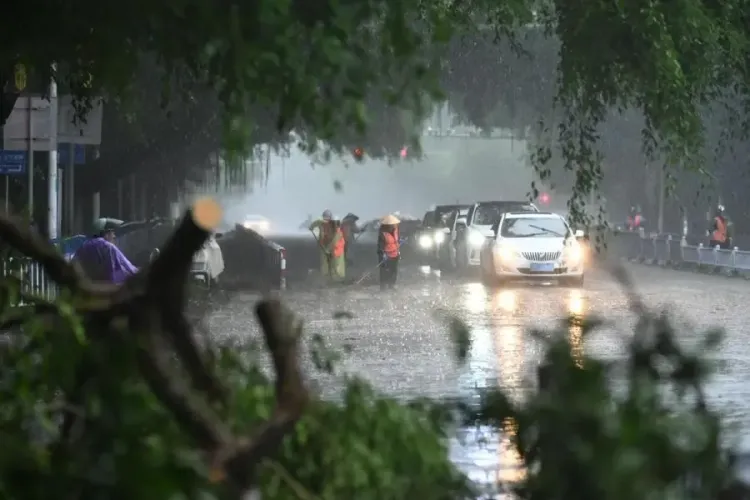What Impact Did Typhoon Matmo Have on Vietnam?

Synopsis
Key Takeaways
- Eight fatalities reported due to Typhoon Matmo.
- Over 15,700 homes submerged in flooding.
- Emergency services deployed for recovery efforts.
- Significant crop damage, affecting food security.
- Government response includes urgent safety measures.
Hanoi, Oct 8 (NationPress) Severe rainfall and flooding caused by Typhoon Matmo have resulted in the loss of eight lives and injuries to five others in Vietnam, as reported by the Vietnam Disaster and Dyke Management Authority on Wednesday.
More than 15,700 homes were submerged, with over 400 properties suffering damage. Approximately 14,600 hectares of rice and other crops were flooded, according to the agency.
In addition, over 97,000 livestock and poultry were either killed or swept away, while flooding, landslides, and traffic disruptions were reported at 602 locations across the northern mountainous and north-central regions, as stated by the Xinhua news agency.
On Tuesday, Vietnamese Prime Minister Pham Minh Chinh issued an urgent directive to enhance efforts aimed at preventing flash floods and landslides, as well as ensuring the safety of those in affected areas.
Earlier, on October 7, part of the Bac Khe 1 hydropower dam in Lang Son province had collapsed, according to the Vietnam News Agency.
This incident was attributed to prolonged rainfall and excessive water pressure resulting from the heavy downpours associated with Typhoon Matmo, the 11th storm to impact Vietnam this year.
Emergency services, including police and military personnel, have been deployed to stabilize the situation and mitigate further damage.
Typhoon Matmo also made landfall on October 6 in south China's Guangxi Zhuang Autonomous Region, where it weakened while recovery efforts began to address the extensive damage caused.
As it made landfall in Guangxi's coastal regions on Monday, the typhoon was downgraded to a severe tropical storm, generating strong winds and heavy rain that particularly impacted the cities of Beihai, Qinzhou, and Fangchenggang.
By Monday, the typhoon had affected 10,561 residents in Beihai, with 10,003 individuals relocated for their safety and around 3,400 hectares of crops reported as damaged, according to the municipal emergency management bureau.
Strong winds also uprooted more than 4,000 trees in Beihai, causing road blockages. Municipal authorities mobilized teams to clear debris and restore traffic.
Both Qinzhou and Fangchenggang reported fallen trees and billboards, prompting emergency personnel to clean debris and address waterlogging issues.
According to regional weather authorities, Typhoon Matmo moved into northeastern Vietnam around noon on Monday, although forecasts indicated that strong winds and rain would continue in western and southern parts of Guangxi.
Temporary traffic controls in Qinzhou and Chongzuo were lifted as railway services gradually resumed.
In Beihai, extensive power restoration efforts were underway in affected areas, involving more than 1,300 personnel, 116 emergency power vehicles, and 1,730 generators.








